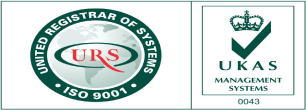Siemens Simcenter STAR-CCM
Siemens Simcenter STAR-CCM: Advanced Simulation Software for Multiphysics Modeling
In the world of complex engineering simulations, Siemens Simcenter STAR-CCM stands out as a premier solution for multiphysics modeling. Developed to address a broad range of engineering problems, this powerful software integrates Computational Fluid Dynamics (CFD), heat transfer, structural analysis, and other multiphysics capabilities into a single unified platform. Engineers across industries—automotive, aerospace, electronics, energy, and more—rely on Siemens Simcenter STAR-CCM to enhance product performance, optimize designs, and reduce the time and cost of prototyping.

Key Features and Capabilities of Siemens Simcenter STAR-CCM
Siemens Simcenter STAR-CCM offers a robust suite of features tailored to meet the needs of demanding engineering projects. Its all-in-one environment provides engineers with the tools they need to address a variety of complex simulations accurately and efficiently.
Computational Fluid Dynamics (CFD) The core of Siemens Simcenter STAR-CCM: lies in its CFD capabilities. Designed to simulate fluid flows, this module enables detailed analysis of fluid behavior, pressure drops, turbulence, and other flow characteristics across complex geometries. By allowing engineers to predict fluid dynamics with high precision, STAR-CCM significantly enhances the design of systems in which fluid behavior plays a key role, such as in automotive, aerodynamics or HVAC systems.
Heat Transfer and Thermal Analysis: STAR-CCM’s thermal analysis features allow engineers to simulate heat transfer within and around products. This includes conduction, convection, and radiation, providing critical insights into thermal performance. In industries where temperature control is vital, such as electronics or energy, thermal analysis helps ensure designs can withstand operational heat loads and maintain performance under varying conditions.
Multiphase Flow Simulation: For applications where multiple fluid phases interact (such as gas-liquid or liquid-solid combinations), Siemens Simcenter STAR-CCM offers advanced multiphase flow capabilities. These allow for the simulation of complex phenomena like boiling, cavitation, or droplet formation, which are common in areas like fuel injection systems, chemical processing, and material manufacturing.
Solid Mechanics and Structural Analysis: By incorporating solid mechanics and structural analysis, STAR-CCM provides a true multiphysics environment. Engineers can evaluate the structural integrity and mechanical behavior of components under operational loads. This integration of fluid and structural analysis is especially useful in fields where structural integrity is affected by fluid flow, such as in pressure vessels or aircraft components.
Free Surface Modeling: STAR-CCM supports free surface modeling, which is crucial for applications involving fluid surfaces, such as ships, offshore structures, and other maritime applications. Free surface modeling allows engineers to simulate water-air interfaces, helping to optimizing designs for stability, performance, and safety.
Chemical Reactions and Combustion Modeling: For industries requiring detailed chemical reaction analysis, such as automotive engines, industrial furnaces, and gas turbines, Siemens Simcenter STAR-CCM offers a powerful combustion modeling module. This allows for the accurate simulation of chemical reactions and heat release, which is essential for optimizing fuel efficiency, emissions control, and performance.
Electromagnetics Integration STAR-CCM also integrates electromagnetics simulation, which is valuable for designing systems involving electric fields, magnetic fields, or both. Applications include electric motor design, magnetic sensors, and electromagnetic compatibility analysis, essential in today’s electronics and automotive industries.
Automation and Optimization: Built-in automation tools within Siemens Simcenter STAR-CCM allow for the automation of simulation processes and optimization of designs. Through parameter sweeps, design of experiments (DOE), and optimization algorithms, engineers can explore design variations, compare results, and arrive at the optimal solution faster.
How Siemens Simcenter STAR-CCM Functions
The workflow in Siemens Simcenter STAR-CCM is meticulously designed to streamline complex multiphysics simulations while ensuring accuracy and reliability. Here’s an overview of how the software operates from model setup to results interpretation:
CAD and Geometry Preparation Siemens Simcenter STAR-CCM integrates seamlessly with CAD programs, allowing engineers to import or create geometries directly within the software. Geometry preparation tools enable users to refine models, define complex shapes, and prepare them for simulation. By preparing the CAD model within STAR-CCM, engineers eliminate compatibility issues and streamline the design process.
Meshing: STAR-CCM features an advanced meshing engine capable of generating high-quality, multi-region, polyhedral meshes. These meshes allow for accurate simulation by discretizing the geometry into elements, enabling precise calculations for each segment. Users can customize meshing parameters based on the complexity and requirements of their projects, ensuring a balance between computational efficiency and result accuracy.
Physics Setup and Boundary Conditions: The physics setup within Siemens Simcenter STAR-CCM is extensive, allowing users to define the physical characteristics of fluids, solids, and interfaces within the simulation environment. Engineers input properties such as material density, viscosity, thermal conductivity, and boundary conditions that replicate real-world operating conditions. These inputs ensure the simulation mirrors how the design will behave in actual use.
Solver Technology: STAR-CCM uses advanced solvers that incorporate cutting-edge numerical methods to solve multiphysics problems. These solvers calculate fluid flows, heat transfer, structural stresses, and electromagnetic fields, providing detailed insight into each aspect of the product’s performance. STAR-CCM’s solver technology is optimized for performance, ensuring simulations are completed within practical timeframes even for highly complex models.
Simulation Monitoring and Data Analysis: Engineers can monitor the simulation in real time, observing parameters like pressure, temperature, and flow velocity. Siemens Simcenter STAR-CCM+ offers data visualization tools, including contour plots, vector fields, and animations, to help users interpret results effectively. These visualizations enable a clear understanding of how different forces and conditions impact the design, aiding in identifying areas for improvement.
Post-Processing and Reporting: After completing simulations, STAR-CCM provides comprehensive post-processing capabilities, allowing engineers to analyze and compare data. The software supports automated reporting, which can be customized to highlight specific metrics, making it easier for teams to communicate findings. Engineers can quickly generate performance summaries, identify trends, and document insights that will guide design decisions.
Design Exploration and Optimization: With built-in optimization tools, Siemens Simcenter STAR-CCM+ supports design exploration through DOE and parameter variation. Engineers can set up multiple simulations to test different design variables, analyze trade-offs, and ultimately optimize designs for performance, efficiency, or durability. This functionality is especially valuable in industries where designs must balance numerous factors, such as automotive aerodynamics and energy-efficient HVAC systems.

Applications of Siemens Simcenter STAR-CCM Across Industries
The versatility of Siemens Simcenter STAR-CCM allows it to be applied across numerous industries for a wide range of engineering challenges. Here are some applications in key sectors:
Automotive and Transportation: STAR-CCM is widely used in the automotive industry to simulate aerodynamics, thermal management, and fluid dynamics, allowing for optimized designs that reduce drag, enhance fuel efficiency, and improve passenger comfort. It also supports the analysis of electric vehicle (EV) components, such as battery cooling and electric motor performance.
Aerospace and Defense: Aerospace engineers use STAR-CCM to model aerodynamic behavior, control surface forces, and thermal stresses. Its multiphysics capabilities makes it ideal for simulating complex interactions between airflows, structural components, and temperature variations in aerospace designs.
Electronics Cooling: With the increasing power density in electronics, thermal management has become critical. STAR-CCM’s thermal analysis capabilities make it an essential tool for optimizing heat sinks, cooling fans, and enclosures, helping prevent overheating in electronic devices.
Energy and Process Industries: In power generation and chemical processing, STAR-CCM enables the simulation of fluid flows, heat transfer, and chemical reactions, aiding in the optimization of turbines, reactors, and other equipment. Engineers in these industries rely on STAR-CCM to enhance operational efficiency and safety.
Marine and Offshore: Free surface modeling within STAR-CCM makes it suitable for maritime applications such as hull design and offshore structures. By simulating wave interactions and water flow, engineers can optimize vessel stability and hydrodynamics.
DDSPLM Private Limited: Your Authorized Reseller for Siemens Simcenter STAR-CCM
As a certified Siemens Simcenter STAR-CCM reseller, DDSPLM Private Limited is dedicated to providing comprehensive simulation solutions for today’s engineering challenges. Our expertise ensures clients benefit from the full power of STAR-CCM, backed by expert support and tailored training resources. Partnering with DDSPLM empowers companies to take their product designs to new levels of performance, reliability, and efficiency with Siemens Simcenter STAR-CCM as their go-to simulation software.


